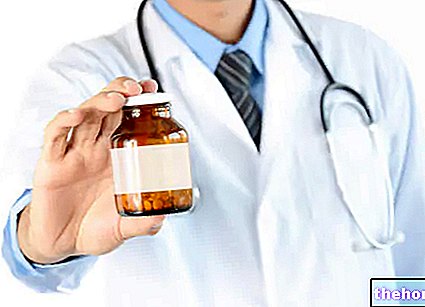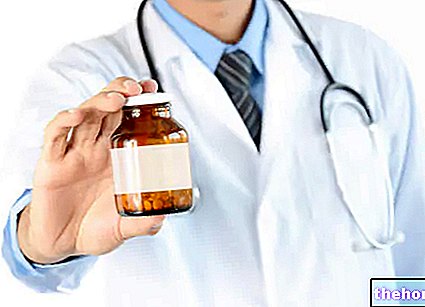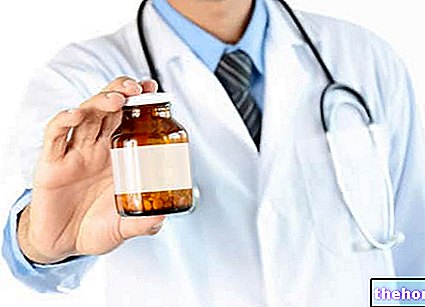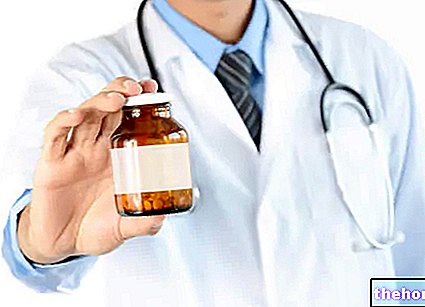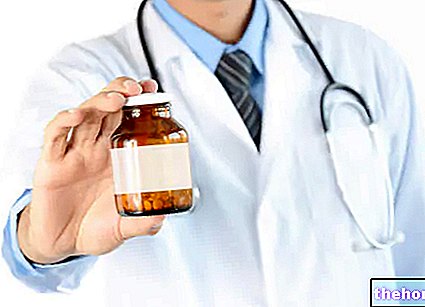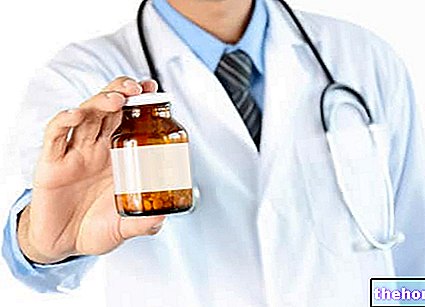Active ingredients: Triprolidine (Triprolidine Hydrochloride), Pseudoephedrine (Pseudoephedrine Hydrochloride)
ACTIFED 2.5 mg + 60 mg tablets
ACTIFED 2.5 mg / 10 ml + 60 mg / 10 ml syrup
Indications Why is Actifed used? What is it for?
WHAT IS IT
Nasal decongestants for systemic use, sympathomimetics
WHY IT IS USED
Actifed is used to decongest the nasal mucosa (clears the stuffy nose quickly and for over 6 hours), especially in case of a cold.
Contraindications When Actifed should not be used
ACTIFED should not be used in case of hypersensitivity to the active substances, to other antihistamines or to any of the excipients. The drug cannot be taken by children under the age of 12, during pregnancy, lactation, in patients being treated with monoamine oxidase inhibitors (MAOIs) or in the two weeks following such treatment, and in the treatment of diseases of the lower respiratory tract (bronchi and lungs), including bronchial asthma. Due to its anticholinergic effects, do not use in case of glaucoma, prostatic hypertrophy (enlarged prostate), bladder neck obstruction, pyloric (stomach valve) and duodenal (first part of the intestine) stenosis (narrowing) or of other tracts of the gastrointestinal and urogenital systems. It is also contraindicated in cardiovascular diseases (heart and circulation diseases), arterial hypertension (high blood pressure), hyperthyroidism (excessive thyroid activity), as well as epilepsy and diabetes.
Also read the section "What to do during pregnancy and" breastfeeding ".
Precautions for use What you need to know before taking Actifed
Although pseudoephedrine did not produce important effects on the blood pressure of normotensive subjects (with normal blood pressure values), ACTIFED should not be taken by patients on antihypertensive, tricyclic antidepressants, sympathomimetic agents, such as decongestants, anorectics, amphetamine-like.
Actifed should not be used by patients with severe kidney or liver disease.
Interactions Which drugs or foods can modify the effect of Actifed
If you are using other medicines ask your doctor or pharmacist for advice.
The effects of antihistamines are made more evident by alcohol, hypnotics, sedatives, tranquilizers, and other substances with anticholinergic action or depressant effect on the central nervous system, which should therefore not be taken during therapy. Antihistamines can reduce the duration of action of oral anticoagulants. The use of antihistamines can mask the early signs of ototoxicity (ear toxicity) of certain antibiotics.
Furazolidone causes a progressive inhibition of monoamine oxidase, so it should not be taken at the same time as ACTIFED.
The effect of antihypertensives that interfere with the activity of the sympathetic nervous system (eg methyldopa, alpha and beta blockers, debrisoquine, guanethidine, betanidine and bretylium) can be partially canceled by ACTIFED, which therefore, also in this case, it should not be taken at the same time.
Warnings It is important to know that:
If symptoms do not improve within 7 days or if other side effects appear, stop treatment and consult your doctor.
At common therapeutic doses, antihistamines exhibit highly variable secondary reactions from subject to subject and from compound to compound.
Effects on ability to drive and use machines
Since the most frequent secondary effect is sedation which can manifest itself with drowsiness, those who can drive vehicles or carry out operations that require integrity of the degree of vigilance must be warned of this.
For those who practice sports: the use of the drug without therapeutic need constitutes doping and can in any case determine positive anti-doping tests
Important information about some of the ingredients
The syrup contains sucrose, this should be taken into account in case of low calorie (low calorie) diets.
The syrup contains glycerol: it can be dangerous in high doses.
It can cause migraines, stomach upset and diarrhea.The syrup contains methyl para-hydroxybenzoate: it can generally cause delayed-type allergic reactions, such as dermatitis; rarely immediate reactions with urticaria and bronchospasm.
The tablets contain lactose, in case of ascertained intolerance to sugars contact your doctor before taking the medicine.
When it should be used only after consulting the doctor Elderly. Consult your doctor to determine the dose in the elderly due to their greater sensitivity to antihistamines and to pseudoephedrine.
Individuals with impaired liver and kidney function: ACTIFED should also not be used by patients with severe liver or kidney disease.
What to do during pregnancy and breastfeeding
Do not use if pregnant or breastfeeding
Dose, Method and Time of Administration How to use Actifed: Posology
How many
Do not exceed the recommended dose. Syrup:
Adults and children over 12 years: a dose of 10 ml of syrup 2 - 3 times a day.
Tablets:
Adults and children over 12 years: one tablet 2 - 3 times a day.
When and for how long
Warning: use only for short periods of treatment
Consult your doctor if the disorder occurs repeatedly or if you have noticed any recent changes in its characteristics.
Like
Syrup:
A measuring cup is attached to the package with indicated level marks corresponding to the capacities of 5 and 10 ml.
Overdose What to do if you have taken too much Actifed
In case of excessive dosage, marked depressive or stimulating effects on the Central Nervous System, drowsiness, lethargy, respiratory depression, hypertension, irritability, convulsions are generally observed. If you have swallowed an excessive dose of Actifed, notify your doctor immediately or go to the nearest hospital.
IF YOU HAVE ANY DOUBTS ABOUT THE USE OF ACTIFED, CONTACT YOUR DOCTOR OR PHARMACIST
Side Effects What are the side effects of Actifed
Like all medicines, ACTIFED can cause side effects, although not everybody gets them.
ACTIFED can cause mainly drowsiness, then asthenia, dizziness, allergic skin rashes, photosensitization, dry mouth, urinary retention, thickening of bronchial secretions, gastrointestinal disorders such as nausea, vomiting and diarrhea, possibly reducible by administering the product after meals , excitation of the Central Nervous System, especially in children, accompanied by insomnia, euphoria and tremors; very rarely haematic (blood) alterations and, especially in the elderly, headache, extrasystole (abnormal beat), tachycardia (rapid heartbeat) and hypotension ( lowering of blood pressure).
Compliance with the instructions contained in the package leaflet reduces the risk of undesirable effects.
These side effects are usually transient. However, when they occur, it is advisable to consult your doctor or pharmacist.
If any of the side effects gets serious, or if you notice any side effects not listed in this leaflet, inform your doctor or pharmacist Ask for and fill out the side effects report card available at your pharmacy (Form B) .
Expiry and Retention
Expiry: see the expiry date indicated on the package. Warning: do not use the medicine after the expiry date indicated on the package. The expiry date refers to the product in intact and correctly stored packaging.
Tablets: Store at a temperature not exceeding 25 ° C, in a dry place.
Syrup: Keep away from light.
Keep this medicine out of the reach and sight of children.
It is important to always have the information about the medicine available, so keep both the box and the package leaflet.
Medicines should not be disposed of via wastewater or household waste. Ask your pharmacist how to throw away medicines you no longer use. This will help protect the environment.
Composition and pharmaceutical form
COMPOSITION
Each tablet contains:
Active ingredients: Triprolidine hydrochloride 2.5 mg Pseudoephedrine hydrochloride 60.0 mg
Excipients: Lactose, Corn starch, Povidone, Magnesium stearate. Each bottle of 100 ml of syrup contains:
Active ingredients: Triprolidine hydrochloride 25 mg (equal to 0.25 mg per ml)
Pseudoephedrine hydrochloride 600 mg (equivalent to 6 mg per ml)
Excipients: Glycerol, Sucrose, Methyl para-hydroxybenzoate, Sodium benzoate, Quinoline yellow (E104), Sunset yellow (E110), Purified water.
HOW IT LOOKS
Carton containing a blister of 12 tablets
Bottle of 100 ml of syrup with measuring cup calibrated at 5 and 10 ml
Source Package Leaflet: AIFA (Italian Medicines Agency). Content published in January 2016. The information present may not be up-to-date.
To have access to the most up-to-date version, it is advisable to access the AIFA (Italian Medicines Agency) website. Disclaimer and useful information.
01.0 NAME OF THE MEDICINAL PRODUCT
ACTIFED
02.0 QUALITATIVE AND QUANTITATIVE COMPOSITION
Active principles:
One tablet contains:
Triprolidine Hydrochloride 2.5 mg; Pseudoephedrine Hydrochloride 60.0 mg.
100 ml of syrup contain:
Triprolidine Hydrochloride 0.025 g; Pseudoephedrine Hydrochloride 0,600 g.
For the full list of excipients, see section 6.1
03.0 PHARMACEUTICAL FORM
Tablets and syrup.
04.0 CLINICAL INFORMATION
04.1 Therapeutic indications
Decongestant of the nasal mucosa, especially in case of colds.
04.2 Posology and method of administration
Syrup:
A measuring cup is attached to the package with indicated level marks corresponding to the capacities of 5 and 10 ml.
Adults and children over 12 years old: a dose of 10 ml of syrup 2 - 3 times a day.
Tablets:
Adults and children over 12 years old: one tablet 2 - 3 times a day.
Do not exceed the recommended dose.
04.3 Contraindications
Known hypersensitivity to the active substances, to other antihistamines or to any of the excipients.The drug is contraindicated in children under the age of 12, during pregnancy, lactation, in patients receiving monoamine oxidase inhibitors (MAOIs) or in the two weeks following such treatment, and in the treatment of lower respiratory tract diseases. , including bronchial asthma. Due to its anticholinergic effects, do not use in case of glaucoma, prostatic hypertrophy, bladder neck obstruction, pyloric and duodenal stenosis or other tracts of the gastrointestinal and urogenital system. It is also contraindicated in cardiovascular diseases, arterial hypertension, hyperthyroidism, as well as epilepsy and diabetes.
04.4 Special warnings and appropriate precautions for use
If symptoms do not improve within 7 days or if you experience a high fever or other side effects, stop treatment and consult your doctor.
At common therapeutic doses, antihistamines exhibit highly variable secondary reactions from subject to subject and from compound to compound. Consult your doctor to determine the dose in the elderly due to their greater sensitivity to antihistamines and to pseudoephedrine. Although Pseudoephedrine did not produce important effects on the blood pressure of normotensive subjects, Actifed should not be taken by patients on antihypertensive, tricyclic antidepressant, sympathomimetic agents, such as decongestants, anorectics, amphetamine-like. L "Actifed should not be used. not even be used by patients with severe kidney or liver disease. The syrup contains sucrose, this should be taken into account in case of low calorie diets.
The syrup contains glycerol: it can be dangerous in high doses. It can cause migraines, stomach upset and diarrhea.
The syrup contains methyl para-hydroxybenzoate: it can generally cause delayed allergic reactions, such as dermatitis; rarely immediate reactions with urticaria and bronchospasm.
The tablets contain lactose, therefore patients with rare hereditary problems of galactose intolerance, the Lapp lactase deficiency, or glucose-galactose malabsorption should not take this medicine.
04.5 Interactions with other medicinal products and other forms of interaction
The effects of antihistamines are made more evident by alcohol, hypnotics, sedatives, tranquilizers, and other substances with anticholinergic action or depressant effect on the central nervous system, which therefore should not be taken during therapy. Antihistamines can be used. reduce the duration of action of oral anticoagulants.
The use of antihistamines can mask the early signs of ototoxicity of certain antibiotics.
Furazolidone causes a progressive inhibition of monoamine oxidase, so it should not be taken at the same time as Actifed.
The effect of antihypertensives that interfere with sympathetic activity (eg. Methyldopa, alpha and beta blockers, debrisoquine, guanethidine, betanidine and bretylium) can be partially canceled by "Actifed, which therefore, also in this case, should not be simultaneously assumed.
04.6 Pregnancy and lactation
Actifed is contraindicated during pregnancy and breastfeeding.
04.7 Effects on ability to drive and use machines
Since the most frequent secondary effect is sedation which can manifest itself with drowsiness, those who can drive vehicles or attend to operations that require integrity of the degree of vigilance must be warned of this.
04.8 Undesirable effects
Actifed can cause mainly drowsiness, then asthenia, dizziness, allergic skin rashes, photosensitization, dry mouth, urinary retention, thickening of bronchial secretions, gastrointestinal disorders such as nausea, vomiting and diarrhea, possibly reducible by administering the product after meals , excitation of the CNS, accompanied by insomnia, euphoria and tremors; very rarely blood changes and, especially in the elderly, headache, extrasystole, tachycardia and hypotension.
04.9 Overdose
In the event of overdosing, marked depressive or stimulating effects on the CNS, drowsiness, lethargy, respiratory depression, hypertension, irritability, convulsions are generally observed. In children the dominant action is the exciting one with marked tremors, insomnia, hyperactivity and convulsions.
05.0 PHARMACOLOGICAL PROPERTIES
05.1 Pharmacodynamic properties
Pharmacotherapeutic group: nasal decongestants for systemic use, sympathomimetics
ATC code: R01BA52
Triprolidine hydrochloride is an effective antihistamine that determines symptomatic relief in diseases characterized in part or totally by disorders, including allergic ones.
Pseudoephedrine hydrochloride is an upper airway decongestant.
L "Actifed combines these two substances in a product effective in relieving congestion of the nasopharyngeal mucosa. Its action is established quickly and lasts for over 6 hours.
05.2 Pharmacokinetic properties
In adults, peak plasma concentrations of pseudoephedrine occur approximately 2 hours after administration.
It is partially N-demethylated in the liver and transformed into norpseudoephedrine, an active metabolite. It is excreted unchanged in the urine in percentages ranging from 55 to 75%. The half-life is significantly decreased in the case of acidic urine. Conversely, a high urine pH slows its excretion. Triprolidine after oral administration reaches peak levels in about two hours.
Its plasma half-life is approximately three hours.
05.3 Preclinical safety data
LD50 of the triprolidine - pseudoephedrine association:
-topo 2400 mg / kg p.o.
- extract 4000 mg / kg p.o.
06.0 PHARMACEUTICAL INFORMATION
06.1 Excipients
Each tablet contains:
Lactose; Corn starch: Povidone; Magnesium stearate.
100 ml of syrup contain:
Glycerol; Sucrose; Methyl para-hydroxybenzoate; Sodium benzoate; Quinoline yellow (E104); Sunset yellow (E110); Purified water
06.2 Incompatibility
Not known.
06.3 Period of validity
Tablets: 4 years
Syrup: 3 years
06.4 Special precautions for storage
Syrup: keep away from light.
Tablets: store at a temperature not exceeding 25 ° C, in a dry place.
06.5 Nature of the immediate packaging and contents of the package
Opaque blister of 12 tablets
Glass bottle of 100 ml of syrup with measuring cup calibrated at 5 and 10 ml
06.6 Instructions for use and handling
See section 4.2 "posology and method of administration"
07.0 MARKETING AUTHORIZATION HOLDER
Johnson & Johnson SpA
Via Ardeatina km 23,500 - 00040 Santa Palomba - Pomezia ROME
08.0 MARKETING AUTHORIZATION NUMBER
Tablets: AIC N. 018723080.
Syrup: AIC N. 018723092.
09.0 DATE OF FIRST AUTHORIZATION OR RENEWAL OF THE AUTHORIZATION
Tablets - first authorization: 30.09.1991; renewal: May 31, 1995
Syrup - first authorization: 29.01.86; renewal: May 31, 1995
10.0 DATE OF REVISION OF THE TEXT
AIFA resolution of 4 May 2009

